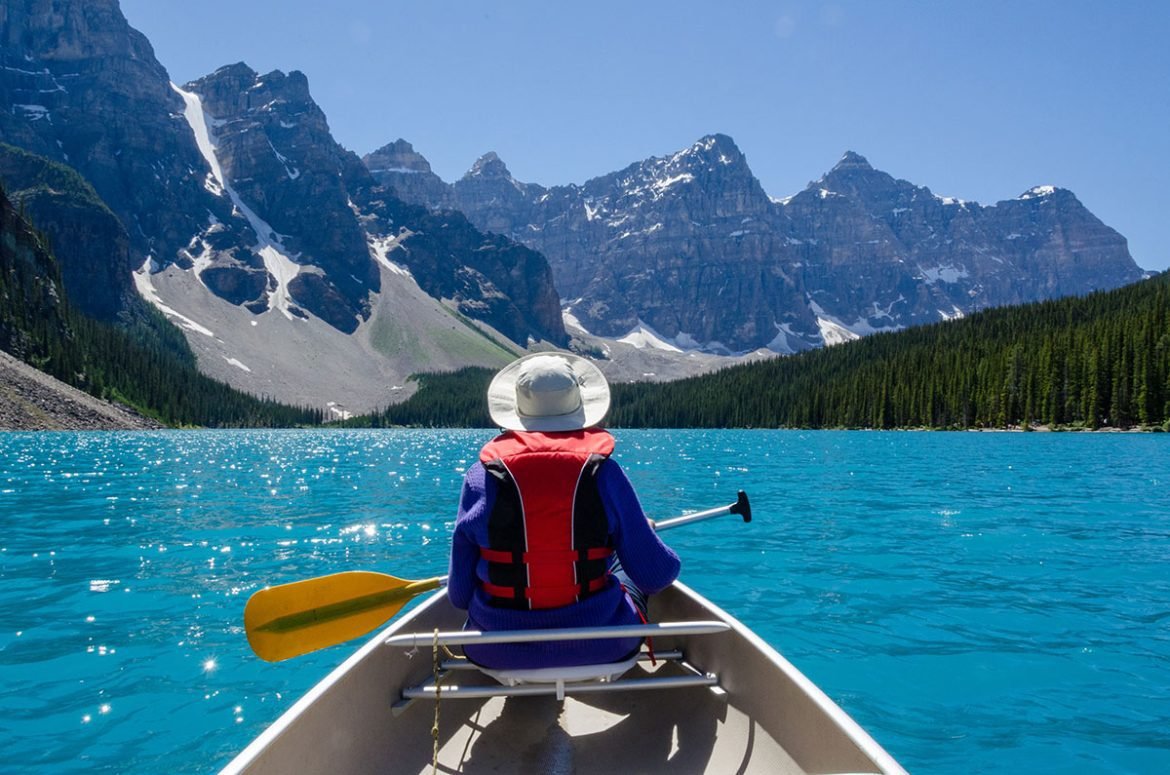Canada’s west is rough since the Rocky Mountains are located there. It’s beautiful, from the seaside to the plains and lakes in the mountains. It’s great since it attracts vacationers all year long, whether they want to go skiing in the winter or hiking in the summer.
However, don’t just stick to outdoor pursuits. From hip Vancouver to regional celebrations, the west is alive with art and music. The West of Canada is a wonderful area to slow down and enjoy life.
10. Calgary

A stunning view of the Calgary skyline in Alberta, Canada. Image source: TRphotos/Shutterstock.com
Located in southern Alberta, the city of Calgary is a visual delight. This city was named after Calgary, Scotland, and it is at the mouth of the Bow and Elbow rivers. The Canadian Rockies are within easy driving distance of Canada’s third-largest city, which hosted the Winter Olympics in 1988.
Calgary’s annual Stampede rodeo is staged in a saddle-shaped arena. In its almost century of existence, the Stampede has become an annual tradition for one million people. There are numerous excellent museums and a world-class performing arts center in Calgary.
9. Haida Gwaii

An aerial view of the historic Ninstints village site in Haida Gwaii, Canada. Image source: Russ Heinl/Shutterstock.com
The beautiful islands of Haida Gwaii may be found in British Columbia’s far north. The enormous number of Haida people who now call these islands home prompted a rebranding from their former moniker, the Queen Charlotte Islands. There are more than 150 islands that make up Haida Gwaii, with Graham and Moresby being the biggest. The artwork of the Haida is featured on the Canadian twenty-dollar note and may also be seen carved onto totem poles, where it is held in high regard.
A walk along the wooded Anvil Trail might take you anywhere from one to two hours. In Haida Gwaii, sports fishermen will find nirvana. The newly excavated clams may be cooked up into a dinner if your lodging has a kitchen.
8. Pacific Rim National Park

A scenic view of the Pacific Rim National Park Reserve in Bamfield, Canada. Image source: Wirestock Creators/Shutterstock.com
Even though Pacific Rim National Park is just a little sliver of land on Vancouver Island, it is just as spectacular as its much larger counterparts. It has rocky shores perfect for surfing and tidal pool exploration (be sure to bring your wet suits for this).
The West Coast Trail is a fantastic route for trekking through ancient woodlands and follows the path that shipwreck survivors followed to make it to safety. The Nuu-chah-nulth culture may be explored further via the park’s informative pathways, exhibits, and stories.
7. Riding Mountain National Park
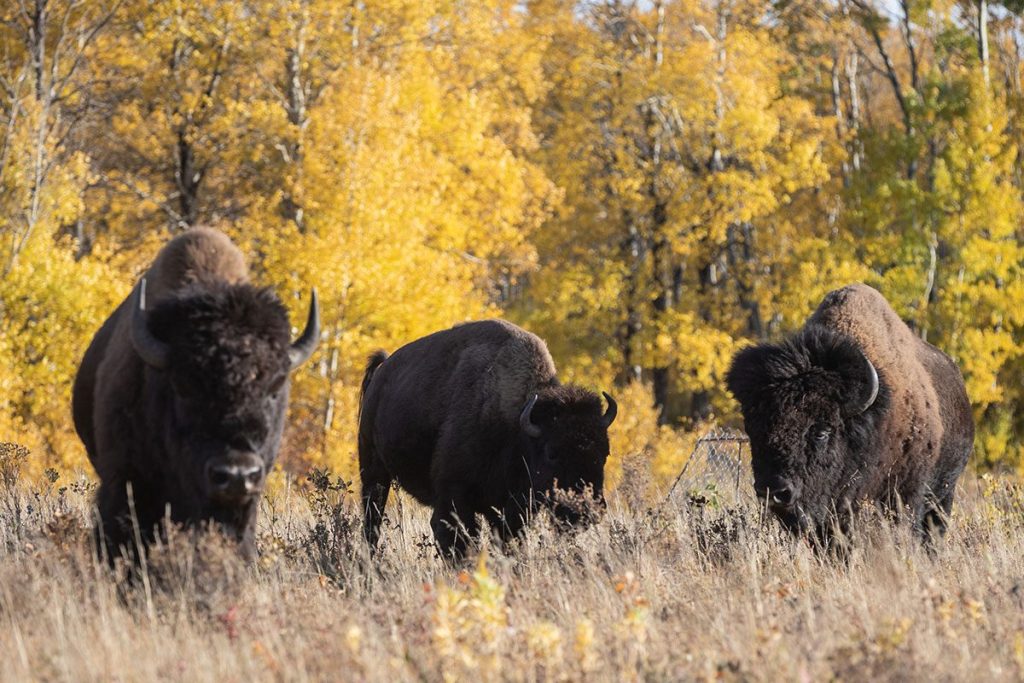
A beautiful view of Riding Mountain National Park in autumn, Canada. Image source: Wirestock Creators/Shutterstock.com
The Canadian province of Manitoba is home to a national park that successfully blends forest and grassland. It’s just 3-and-a-half hours west of Winnipeg, so you can explore the park’s attractions in a day, but you should definitely take your time and enjoy all it has to offer. There are 400 kilometers (250 miles) of paths throughout the park, some of which go deep into the wilderness.
In the winter, the routes are used by cross-country skiers. Bison graze on the grasslands, and if you’re lucky, you might even hear wolves howling. You may also relax on one of the park’s red seats and take in the sights.
6. Whistler

A breathtaking view of Whistler with the Rocky Mountains in the background. Image source: alexfe/Shutterstock.com
Located a mere 78 miles north of Vancouver, the resort town of Whistler welcomes visitors at any time of the year. It must be fantastic if over two million people go to Whistler annually. Snowboarding and other mountain sports draw crowds throughout the winter. Many snow-related events at the 2010 Vancouver Winter Olympics took place in Whistler.
Tourists flock here throughout the summer months to enjoy the mountain biking trails and beautiful surroundings. However, indoor attractions also exist in Whistler. It has an annual arts festival in the autumn that showcases visual and performing arts in addition to music. From Labor Day to the end of the year, the event is in full swing.
5. Yoho National Park
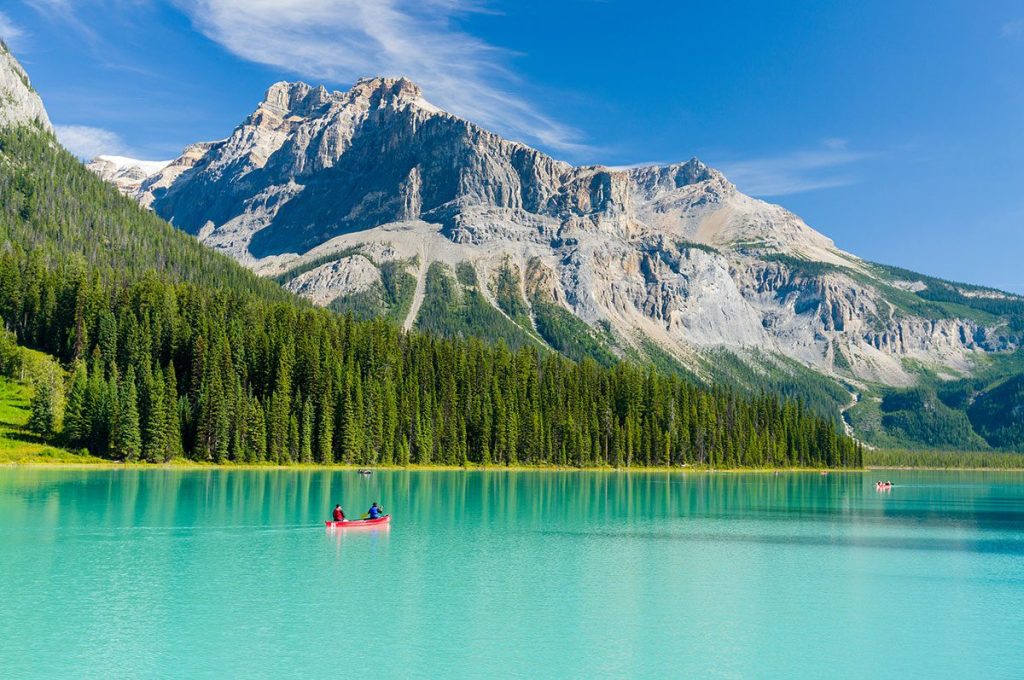
A serene view of the Emerald Lake at Yoho National Park, Canada. Image source: Pongsakorn Teeraparpwong/Shutterstock.com
Yoho National Park in the province of British Columbia in western Canada has the rough landscape you’re looking for. Yoho was established in 1886 and is home to several lofty peaks, the tallest of which is Mount Goodsir, with an elevation of 3,567 meters (11,703 feet). Witness one of Canada’s tallest waterfalls, Takakkaw Waterfalls, as it thunders down a cliff face.
Yoho, which is located on the Continental Divide, is a wonderful place for families to spend time together. Activities such as hiking, camping, cycling, angling, and canoeing are all available. Snowshoeing and cross-country skiing are two wintertime activities. And there is plenty of beautiful scenery, like Emerald Lake’s natural bridge.
4. Jasper National Park
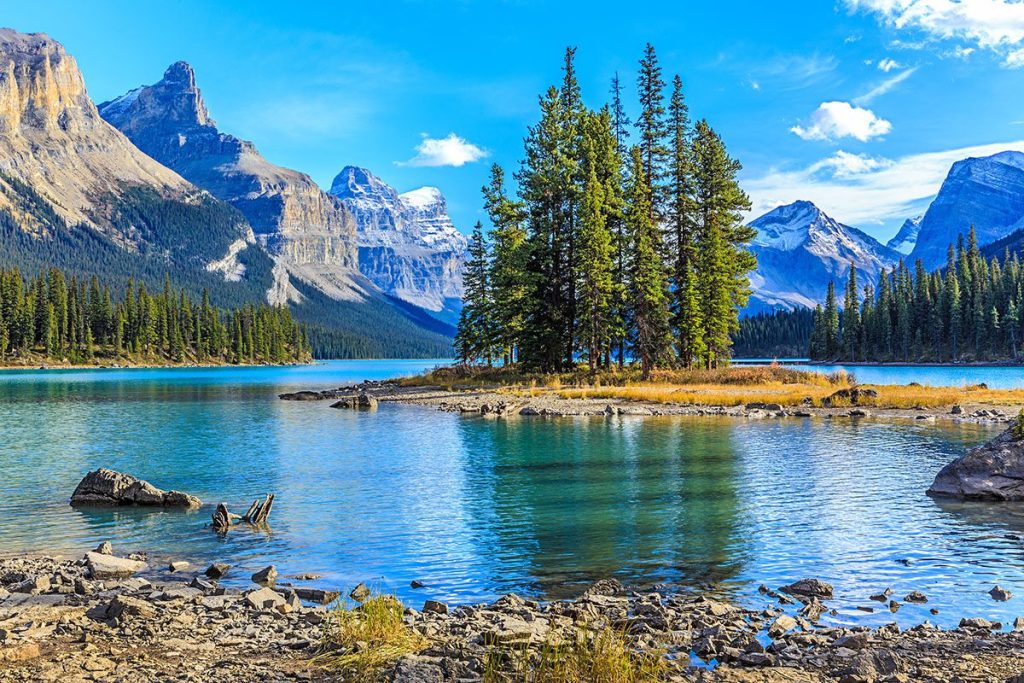
A stunning view of Spirit Island in Maligne Lake, Jasper National Park, Alberta, Canada. Image source: Elena_Suvorova/Shutterstock.com
Jasper National Park, the biggest park in Canada, is the second largest dark sky preserve in the world. There, the night sky is unhindered by city lights and pollution, making it ideal for stargazers. There is a night sky festival in Jasper in October, but stargazing is always a wonderful idea.
Daytime pursuits in the mountains include exploring alpine meadows on foot, paddling across a lake, relaxing in hot springs, and mountain biking. Skiing and snowshoeing are popular wintertime activities. You could see grizzly or black bears (if you’re fortunate), mountain goats, cougars, or wolves in Jasper National Park in Western Canada.
3. Churchill
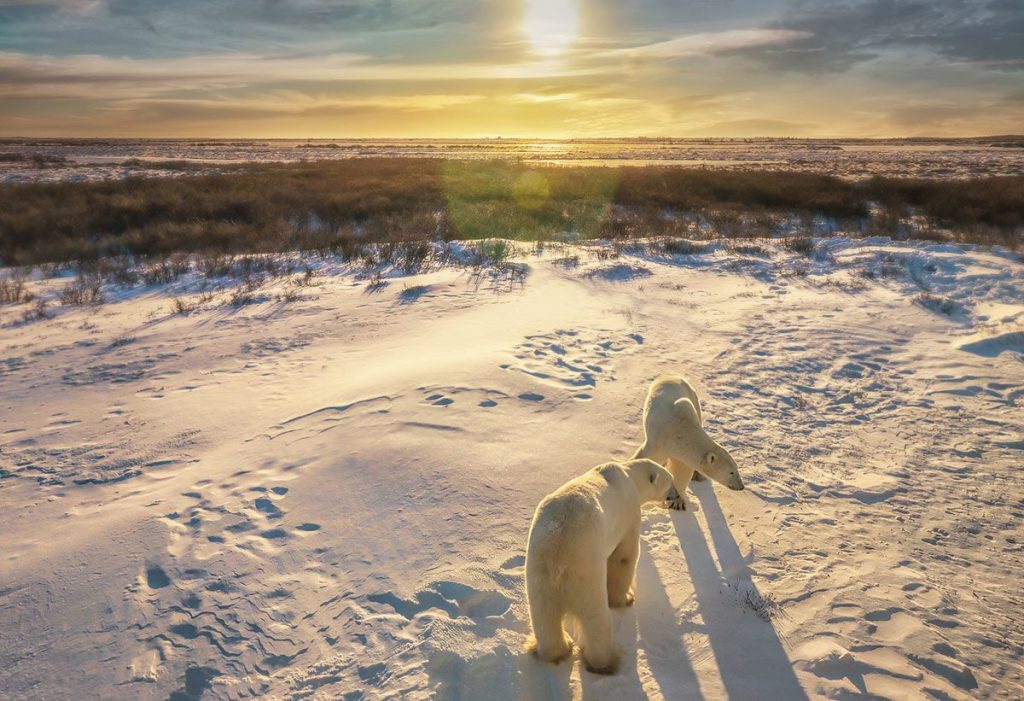
A wide landscape view of Churchill, Canada. Image source: CherylRamalho/Shutterstock.com
A village of fewer than a thousand people, Churchill is northern Manitoba’s most popular tourist destination in the autumn. Churchill earned the moniker “Polar Bear Capital of the World” when polar bears began making the annual migration inland beginning about 1950. Though the best times to see the polar bear migration are in October and early November, travellers may see them throughout the summer on boat cruises near Hudson Bay.
When bears accidentally stray into human settlements, they are often “incarcerated” until they can be safely returned to the wilderness. Since hundreds of beluga whales migrate through the area in July and August, this is also a popular time to come.
2. Vancouver
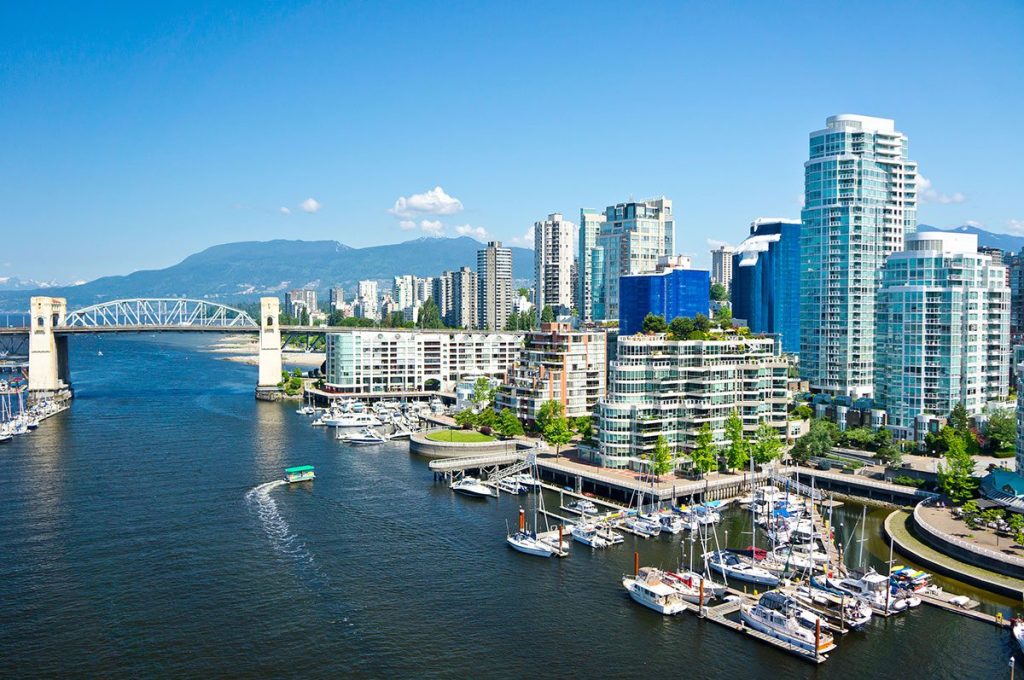
A stunning view of Vancouver from Stanley Park, British Columbia, Canada. Image source: mffoto/Shutterstock.com
Vancouver, the biggest city in British Columbia, is a multicultural metropolis in the lower province. The city, which serves as a major port, is also known for its appreciation of its diverse population, especially its massive Chinatown, the largest in Canada and the second largest in North America. Check out Jimi Hendrix’s memorial in Chinatown while you’re there. The seawall and beach recreation in Stanley Park make it an absolute must-see.
Cross the 70-meter (230-foot) tall Capilano Suspension Bridge, the city’s most visited attraction, if you’re not frightened of heights. Totem poles may be seen at the Museum of Anthropology at the University of British Columbia.
1. Banff National Park
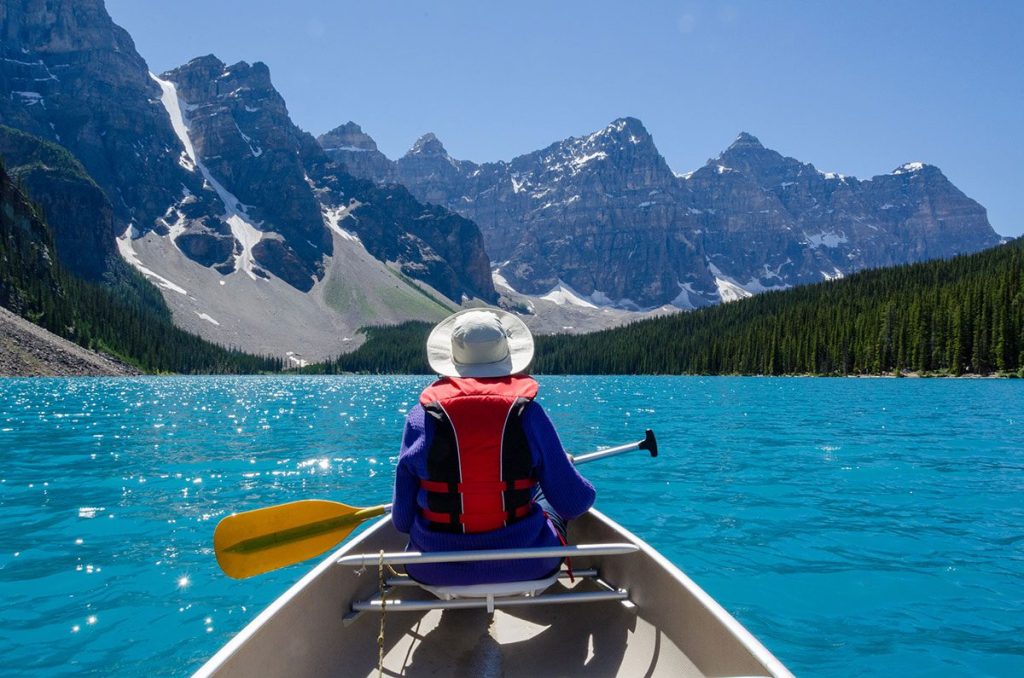
A panoramic view of Banff National Park, Alberta, Canada. Image source: Douglas Wielfaert/Shutterstock.com
Banff National Park, Canada’s first, is home to breathtaking natural features. Lake Louise, the crown jewel of the park, and Moraine Lake, a popular photographic subject, are just two of the many stunning lakes found in this Canadian Rocky Mountain park. There are three million yearly visitors to the park, who come for both the winter activities and the summer hiking and camping.
Moose, deer, elk, and bears, among other animals, may be seen here, and the area is also home to glaciers and ice fields. Within the park’s boundaries lies the city of Banff, home to several lodging options and dining establishments. Take a gondola ride and take in the scenery, or relax in the natural hot springs.


